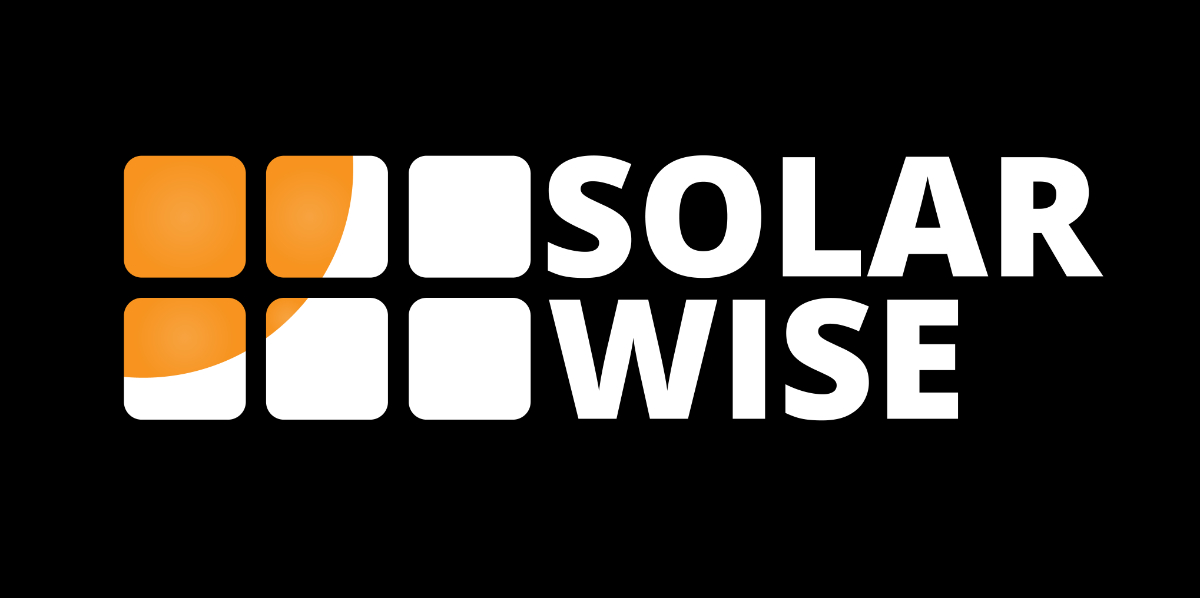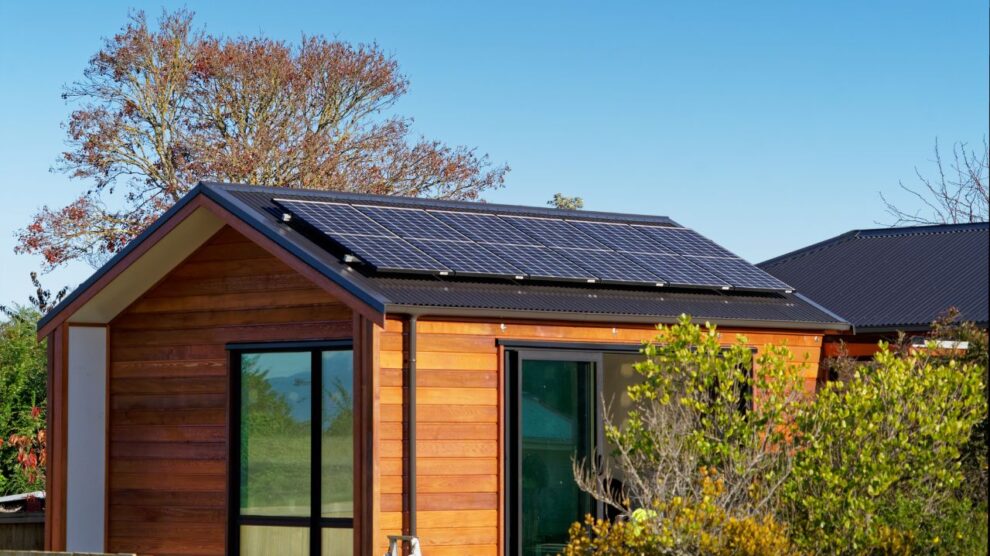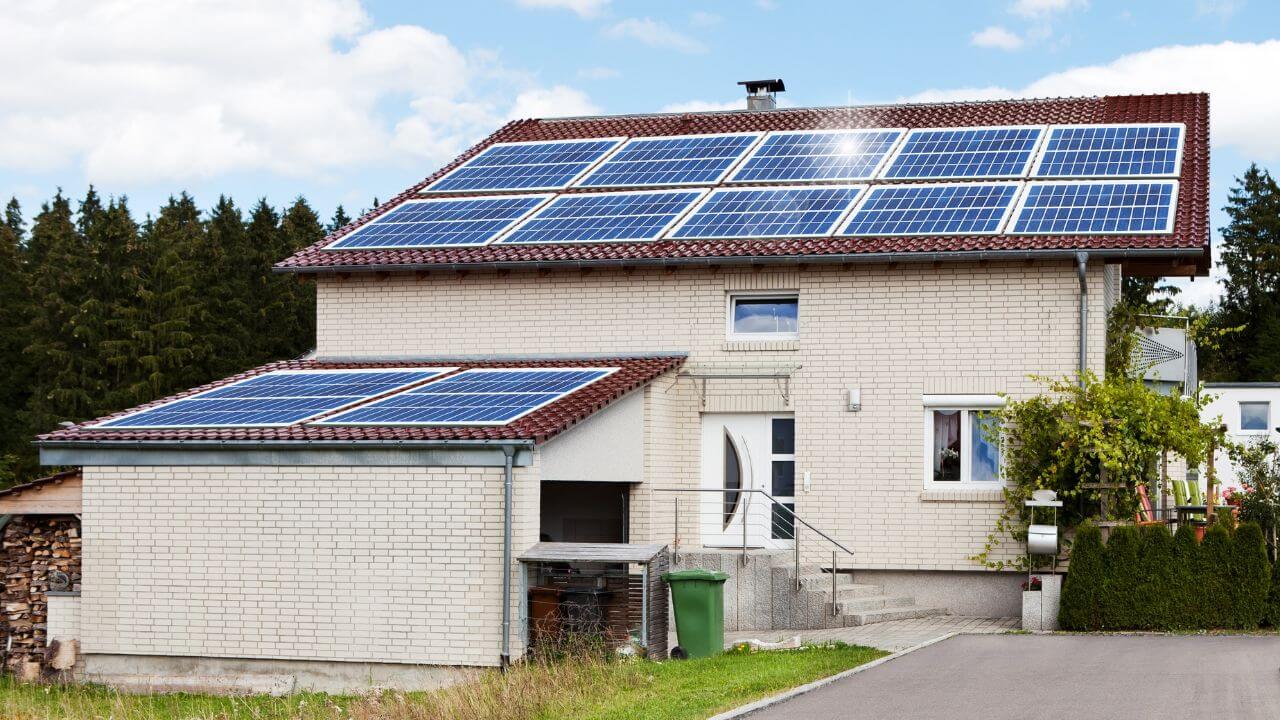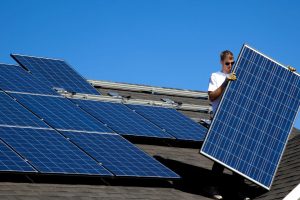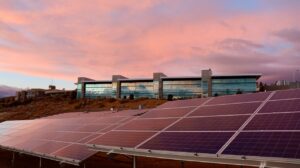Want to break free of traditional power sources? Home-based, off-grid solar systems might be just what you seek. We’re diving deep into how these groundbreaking energy systems work and their advantages.
These solar setups empower homeowners to produce their very own electricity through the combination of solar panels and batteries, allowing a total detachment from the primary power grid. What’s the immediate perk? You can wave goodbye to those regular utility bills and enjoy the freedom to illuminate your residence, even in the most isolated places.
Off-grid solar systems offer more benefits than just personal freedom. Moreover, they benefit the environment. Switching to solar energy will reduce your carbon emissions and make the planet more sustainable.
Advantages of off-grid solar systems
Going off-grid with solar systems presents a wealth of perks for homeowners eager to achieve energy self-sufficiency. Top of the list is eliminating recurring utility bills. Producing your electricity means you’re no longer tethered to the grid for your energy needs, translating to long-term savings and a newfound autonomy in how you use energy.
Solar setups off the grid can bring electricity to remote locations. Whether you’re nestled deep in the countryside or dreaming of a secluded getaway home, off-grid solar systems stand ready to deliver. Batteries combined with solar panels allow these systems to capture daylight energy, storing it at night or during periods of low sunlight.
On top of personal gains, off-grid solar systems also score big on the ecological front. Tapping into the sun’s energy means we drift away from polluting fossil fuels, making strides in diminishing our carbon mark on the Earth. Those looking to champion a greener future will find solar energy to be an excellent choice.
In a nutshell, off-grid solar systems are a gateway to financial savings, self-reliant energy usage, electrifying distant corners, and fostering an eco-friendly living.
Components of an off-grid solar system
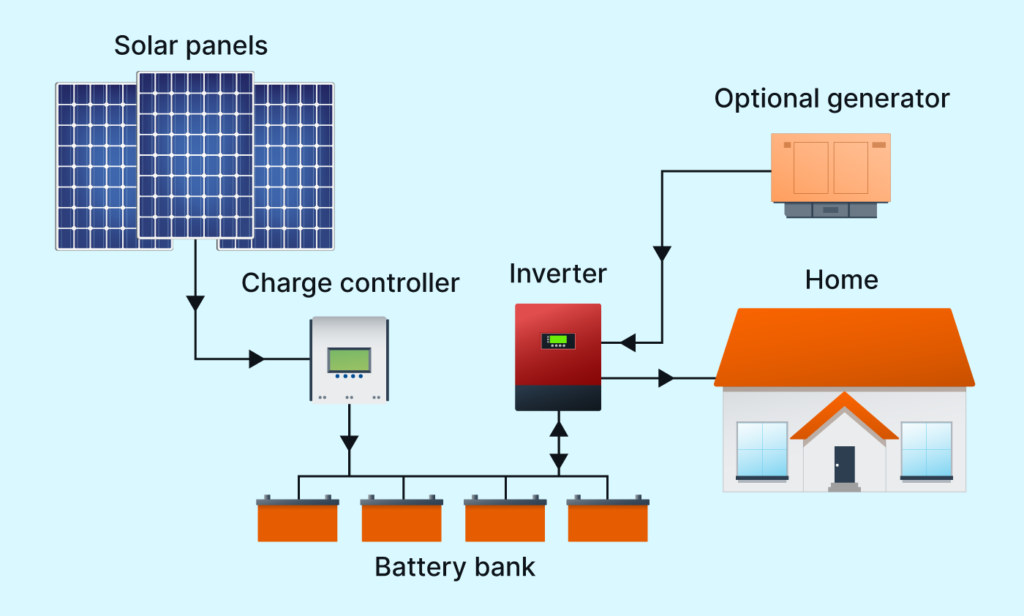
Credit: solarreviews.com
Let’s break down their key elements to grasp the mechanics of off-grid solar systems. Here’s a straightforward overview of the building blocks of such a system:
- Solar Panels: Think of these as sunlight sponges. Installed usually on rooftops or sun-drenched spots, these panels soak in sunlight and transform it into electrical energy.
- Charge Controller: Acting as a vigilant gatekeeper, this device directs electricity from the solar panels to the batteries. Its main job? To ensure the solar batteries get just the right amount of charge, protecting them from overcharging or potential harm.
- Batteries: These are your energy reservoirs. If your panels deliver more energy than needed, the surplus gets stored in these batteries. This stored energy comes into play during nighttime or overcast days when the sun’s not shining as brightly.
- Inverter: Here’s where some technical magic happens. Our household gadgets and appliances need AC (alternating current) power. But the batteries store energy as DC (direct current). The inverter’s role is to transform that DC power into the AC form, making it usable for everyday appliances.
- Backup Generator (optional): Think of this as a plan B. Some homeowners might add a backup generator into the mix. It’s like a safety net, stepping in to provide power during long stretches of dim sunlight or when energy needs to spike beyond usual.
In essence, these components unite in harmony. The sequence goes like this: Sunlight becomes electricity via the solar panels, gets stored in batteries, and then is turned into usable power for your home with the help of the inverter. All the while, the charge controller keeps things balanced, and a backup generator stands by just in case.
Sizing an off-grid solar power system for your home
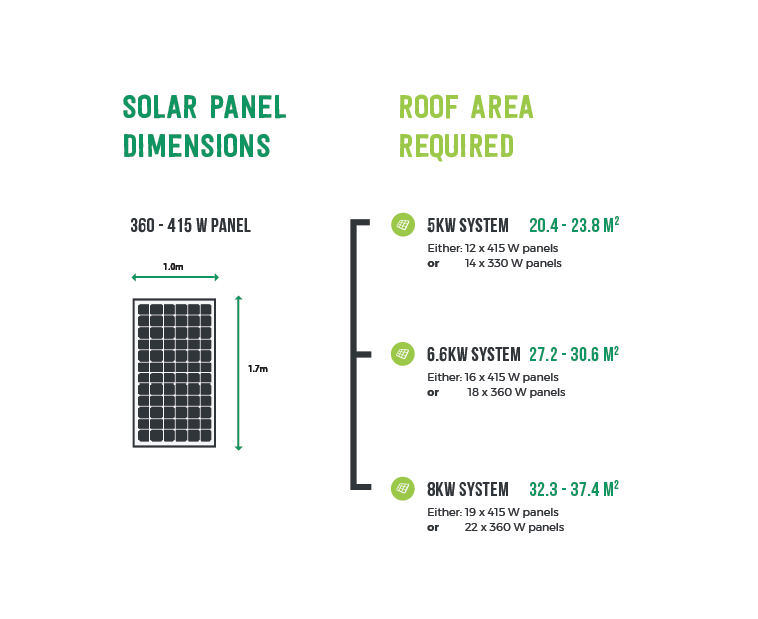
Credit: solarcalculator.com.au
Getting the size suitable for your off-grid solar system is essential; you wouldn’t want to find yourself without enough power or have an oversized system that’s overkill. The ideal size hinges on aspects like your daily power usage, geographical location, and the roster of appliances and gadgets you’ll be running.
Here’s a step-by-step guide to help you figure out the best size:
- Daily Energy Audit: List all appliances and devices you plan to use. Check their wattage (often mentioned on the label or user manual) and multiply it by the number of hours you use them daily. This will give you the daily energy consumption for each item.
- Total Energy Consumption: Add up the daily energy values of all your appliances and devices. This cumulative figure represents your total daily energy needs.
- Location and Sunlight Hours: The amount of sunlight your panels receive depends on your location. Calculate how many panels you should install based on your area’s average daily sunlight hours.
- System Capacity: With your total daily consumption in hand, you can determine the required capacity of your solar system. Remember, it’s not just about generating the energy; you must also store it. So, factor in the storage capacity of the batteries, too.
- Planning Ahead: Our energy needs evolve. Maybe you’ll buy more gadgets in the future or expand your home. It’s wise to account for a little extra capacity, ensuring you’re not left short.
- Seek Expert Advice: While doing your homework is excellent, roping in a seasoned solar system installer can be invaluable. They can provide insights, cross-check your calculations, and guide you through nuances you might not have considered.
In short, sizing your off-grid solar system is a blend of self-assessment and expert consultation. It’s about understanding your current needs, forecasting future ones, and ensuring that the system you set up can comfortably cater to both.
Installing an off-grid solar system
Setting up an off-grid solar system isn’t just about plugging in a few panels and batteries. It’s a meticulous process demanding a clear plan and know-how. Though some avid DIY enthusiasts might consider doing it themselves, the complexities involved make it advisable to engage a seasoned solar professional. Here’s a snapshot of the typical installation journey:
- Evaluating the Site: Before any setup begins, a solar professional will scope out your property. The objective is to pin down the optimal spot for your solar panels. They’ll gauge factors like direct sunlight exposure, potential obstructions like trees, and the sturdiness of structures.
- Mounting the Solar Panels: The solar installer will use robust racking systems to fix the solar panels on your roof or ground mounts. They’ll then wire the panels, ensuring they connect to the charge controller seamlessly.
- Setting Up the Batteries: Batteries, the heart of your energy storage, usually find a place in specialized spots like basements or utility rooms. Ensuring they’re shielded from extreme temperatures and easy to access is crucial. Once placed, they’re linked to both the charge controller and the inverter.
- Hooking up the Inverter and Electrical Work: Next in line is the inverter. It’s positioned close to your home’s main electrical panel. The installer then weaves the off-grid system into your home’s existing electrical network, ensuring a smooth transition of off-grid power.
- System Testing and Kick-off: Once every component is in place, it’s time to fire up the system and take it for a spin. A comprehensive check ensures everything’s up to mark. The installer will then walk you through the system’s operations, offering pointers on routine upkeep.
- A word of caution: Electricity is not something to trifle with. Mistakes can not only harm the system but also pose grave risks. It’s always prudent to lean on the expertise of professionals who come armed with the tools, knowledge, and experience to bring your off-grid solar system to life safely and efficiently.
Maintaining an off-grid solar system

Credit: semanticscholar.org
Consistent upkeep is crucial to keep your off-grid solar system performing at its best. Here’s a simple guide to ensuring your system remains in tip-top shape:
- Solar Panel Clean-up: Over time, panels can accumulate dirt, leaves, and other debris, hampering their ability to capture sunlight efficiently. Regularly clearing off this layer can make a considerable difference. Use a gentle brush or a soft spray of water for this task. Avoid high-pressure jets or abrasive materials that might scratch or damage the panels.
- Battery Care: Batteries are your system’s power reservoirs, and their well-being is paramount. Keep an eye on their fluid levels, topping up when needed. Regularly observe the battery’s temperature, making sure it remains within prescribed limits. Overheating or freezing can severely affect battery performance and lifespan.
- Inverter Checks: The inverter is your system’s nerve center. Inspect it for any visible damage, unusual noises, or warning lights. The display often gives vital information – if something seems off or you spot error codes, contact an expert.
- Performance Tracking: With technological advances, many systems now come with performance monitoring tools. Make good use of these. By closely monitoring energy generation and consumption patterns, you can spot anomalies early and make necessary adjustments.
- Routine Expert Reviews: Even if everything seems fine on the surface, occasionally, having an expert inspect your system is a good practice. They can identify potential issues that might go unnoticed to the untrained eye, ensuring minor hitches don’t escalate into significant setbacks.
In essence, think of your off-grid solar system like any other significant investment in your home. Your solar energy system can last for years with regular care.
Off-grid solar system cost considerations
Navigating the financial landscape of integrating an off-grid solar system into your home requires a thorough understanding of both initial and ongoing expenses. Although such a system promises a future of slashed utility bills, the immediate cost can be a substantial outlay.
Several elements influence the final price tag. The system’s size, the caliber of the components you opt for, installation charges, and extras like backup generators all contribute to the total cost. Gather and compare estimates from several trusted solar providers to secure the best deal without compromising quality.
Yet, the financial journey doesn’t end with the initial investment. There’s a need to factor in the maintenance expenditures and occasional replacement of components, particularly batteries. Fortunately, as technology advances, battery replacements, and general upkeep costs are on a downward trend, enhancing the affordability of sustaining off-grid systems.
A holistic financial assessment doesn’t just focus on the immediate costs but also gauges the long-term savings and returns. By examining your energy usage patterns, anticipated reductions in utility expenses, available subsidies, and incentives, and projecting the returns over the system’s operational life, you can paint a comprehensive picture of the economic impact.
Enlisting the expertise of a professional in the solar industry can be invaluable. They can offer tailored insights, conduct a personalized cost-benefit analysis, and guide you through the intricacies, ensuring your shift to an off-grid solar system is both environmentally sound and financially wise.
Common misconceptions about off-grid solar systems
The realm of off-grid solar systems is often shrouded in myths and misunderstandings, which can sway homeowners away from this sustainable energy avenue. Let’s shed light on some of these misconceptions:
- “It’s Only for The Wilderness”: There’s a perception that off-grid solar systems are exclusively for those tucked away in the hinterlands. While they do serve remote areas brilliantly, it’s not their sole domain. Many homeowners in bustling towns and sprawling cities increasingly opt for off-grid systems, driven by technology leaps and dropping costs.
- “They’re Not Dependable”: A lingering myth suggests that these systems are like fair-weather friends, faltering when you need them most. In reality, when set up right, they’re steadfast, ensuring your lights stay on even on cloudy days or during peak demands. And for those extra-cautious, backup generators can bridge any rare energy gaps.
- “Your Wallet Will Cry”: The initial set-up cost of an off-grid system might seem intimidating, but it’s an investment with an attractive ROI. Over time, the hefty savings on monthly energy bills can offset the initial expenditure. Moreover, several regions offer incentives, rebates, and attractive financing plans, making the venture even more economically appealing.
- “They’re High Maintenance”: Some imagine owning an off-grid solar system is like adopting a needy pet. The reality? These systems, especially with recent technological innovations, are quite low-maintenance. Routine checks and occasional cleaning are often all that’s needed. And if hands-on isn’t your style, professionals can ensure your system is always in peak condition.
In sum, understanding the facts beyond the myths can help homeowners navigate the decision-making landscape and discern if an off-grid solar system aligns with their energy aspirations.
Case studies and success stories of off-grid solar systems
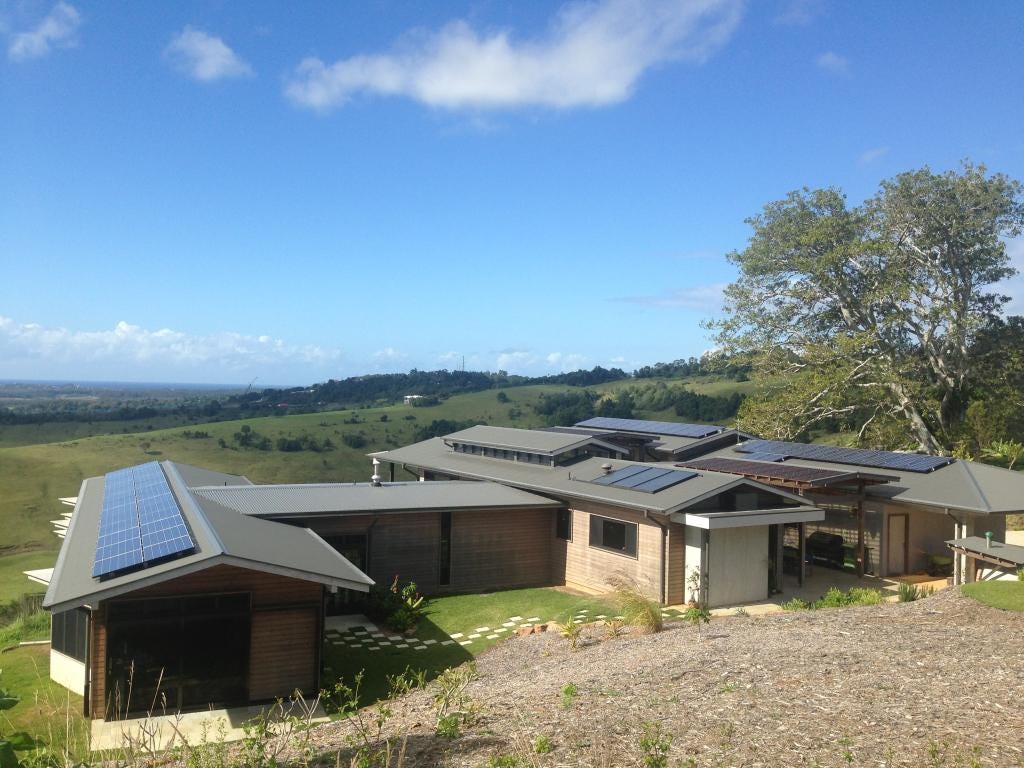
Credit: medium.com
Off-grid solar systems are making significant inroads across diverse settings. By delving into real-life narratives, we can truly understand the transformative power of these systems. Here are some instances to consider:
- The Johnson Family: Nestled in a secluded region, the Johnsons had always depended on noisy, expensive diesel generators. This changed when they made the switch to an off-grid solar system. The hum of generators no longer punctuated the silence of their surroundings, and their monthly energy expenses dwindled to almost nil. Beyond the financial savings, they took pride in adopting a greener, more sustainable energy source.
- The Smiths’ Mountain Retreat: The Smiths’ holiday cabin, perched amidst serene mountains, was their escape from the world. But powering it required a diesel generator, which somehow felt out of place in the tranquil environment. Their decision to shift to an off-grid solar system proved transformative. Their cabin now hums with clean energy, reducing their carbon footprint and granting them uninterrupted peace without a generator’s disturbance and environmental concerns.
- The Farmer’s Boost: A farmer in a drought-prone region employed an off-grid solar system to power his water pumps. This not only made irrigation consistent but also slashed his operational costs. The result? Better yields and increased profits.
These stories echo a singular sentiment: Off-grid solar systems aren’t just about electricity. They’re about enhancing lifestyles, conserving the environment, and creating brighter, more sustainable futures in various settings.
Conclusion: Is an off-grid solar system right for your home?
Embracing an off-grid solar system is more than just adopting a new power source; it’s a leap toward energy sovereignty and sustainability. By harnessing the sun’s rays via solar panels and storing that energy in batteries, homeowners can light up their living spaces, even in places where power lines don’t reach.
The allure of off-grid solar systems is multifaceted:
- Cost Efficiency: Energy savings accumulate over time, making the initial investment worthwhile.
- Energy Autonomy: There’s a unique satisfaction in knowing you’re not reliant on the power grid.
- Eco-friendly: Solar power reduces our carbon footprint, making our homes not just places of comfort but also agents of change.
- Versatility: From mountain cabins to beach houses, off-grid solar can be tailored to power homes in varied terrains and climates.
Yet, it’s pivotal to move past surface-level allure and delve into the intricacies. How big should the system be? How often would it need maintenance? What’s the price tag? Addressing these concerns is crucial to ensure your solar venture is both rewarding and feasible.
As you stand on the precipice of a possible shift to solar, remember that it’s more than just an energy decision. It’s a commitment to a greener, more autonomous, and future-forward lifestyle. And, with expert guidance and a tailored system, you can transform your home into a beacon of sustainable living. Why wait? Illuminate your path to energy independence with off-grid solar today.
